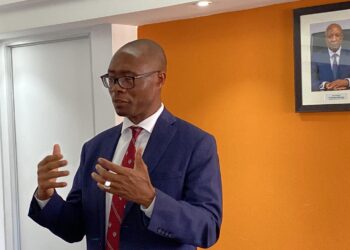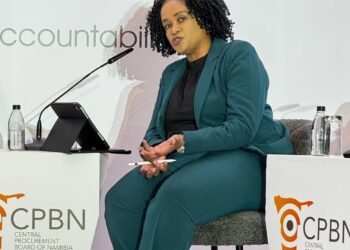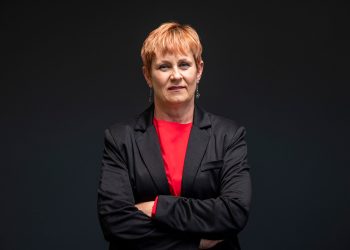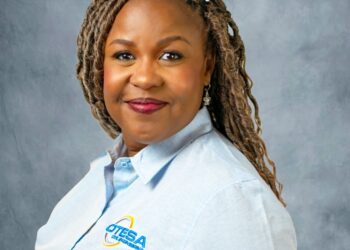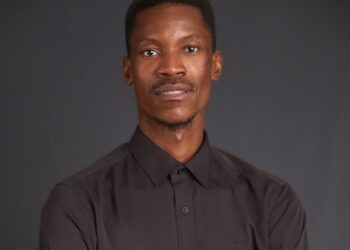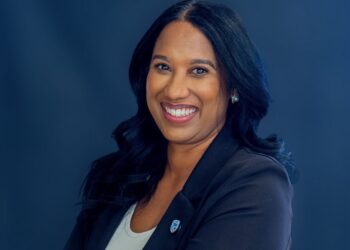
The City of Windhoek could generate up to N$70 million annually by connecting all informal households to the electricity grid, a move that could unlock new funds to reinvest in critical services.
Speaking during a recent city presentation, Obrien Hekandjo, the City’s Strategic Executive for Electricity, said the revenue potential lies in lease agreements with the estimated 54,000 informal households currently without power.
“This translates to an income of N$70 million just for the lease,†said Hekandjo. “And that money again [can] be put in that community to build toilets, to bring water and to upgrade the roads.â€
Currently, Windhoek has approximately 144,000 households, of which only 64% are connected to electricity, spanning both formal and informal areas.
Hekandjo noted that since 2018, the City has connected about 7,000 informal structures, benefiting an estimated 35,000 residents. However, he admitted that progress has been too slow, especially as informal settlements continue to expand by roughly 2,000 households each year.
In response to these challenges, he said the City Council recently adopted a revised electrification approach.
According to Hekandjo, the updated policy allows connections based on provisional layouts, removing the previous requirement of full township formalisation before electrification can occur.
“It allows us now to be able to connect up to 9,400 houses a year at the cost of the city to N$100 million,†he said.
Hekandjo also confirmed that Windhoek operates 58,000 prepaid metres, 16,000 postpaid metres, and 3,760 automated reading metres (AMRs).
He said the City plans to phase out postpaid metres entirely and implement an automated outage notification system. In addition, solar generation capacity is expected to be scaled up to 880 GWh.
Despite these plans, Hekandjo warned that the Electricity Department is operating under significant strain due to understaffing. “At some point we can have one electrician and maybe one or two assistants looking after all the street lights. It’s just not enough,†he said.
Flavian Muyandulwa, the City’s Strategic Executive for Housing, Property Management and Human Settlements, also gave an update on efforts to upgrade informal settlements and formalise new townships.
“We upgraded Havana Extensions 8 and 11, relocated flood-affected residents from Ochomisa to Farm 508, and achieved 94 per cent township establishment in Okatunda and Ganzi,†said Muyandulwa.
He added that new townships were declared on Farms 108, 1008, One Nation, and Ongulumbashe. Cadastral surveys were also completed in Rocky Crest Extension 7 and Venus Proper, resulting in the creation of over 700 erven.
“We signed 4,663 leases with informal residents to improve security of tenure. We also finalised 45 commercial leases, and strategic land was allocated to institutions such as the MVA Fund for trauma hospital development,†he said.
Under the city’s informal settlement housing programme, 520 houses were constructed for 2,600 residents, while an additional eight houses were built for 40 people. A total of 473 Greenfield erven were serviced, and six new townships declared, including four on existing brownfield sites.
Muyandulwa noted several persistent challenges, including high land demand, overcrowding in brownfield areas, land invasions, resistance to relocation, and the lack of basic services at relocation sites.
Windhoek Chief Executive Officer Moses Matyayi said the city is home to 486,200 people — 16% of Namibia’s population — and covers an area of 5,133 square kilometres. He added that Windhoek accommodates 32% of the country’s urban population.
Matyayi said around 224,000 people live in informal settlements, which are growing at an annual rate of 8.2%, more than double the 3.3% growth rate in formal areas.
“Our key challenges are ageing infrastructure, unplanned informal growth, the threat of drought, constrained financial resources, and solid waste management,†said Matyayi.
He noted that the municipality’s 2022–2027 strategic plan focuses on service delivery, infrastructure upgrades, governance, digital transformation, and financial sustainability — with a total estimated cost of N$6 billion.
“We only have an annual turnover of N$5 billion, so there’s a clear funding gap. Despite this, we’ve introduced quarterly reporting, risk management structures, and an internal audit unit,†Matyayi said.


